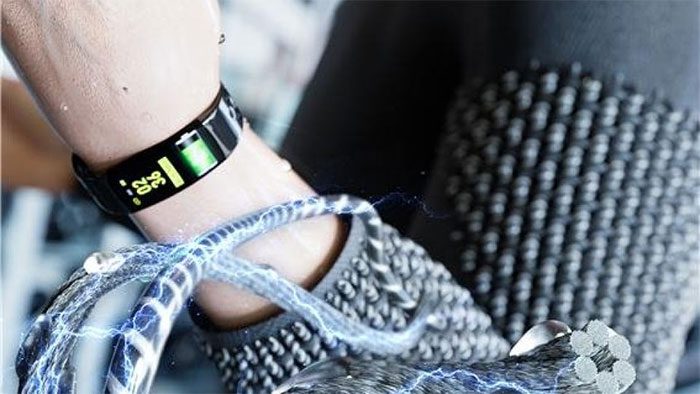With this special fabric, researchers have successfully created a source of energy from sweat and body movement.
The Korea Herald reports that South Korean researchers have developed a new type of fabric capable of generating electricity from sweat and body movement. This innovation promises to usher in a new chapter in the production of next-generation smart clothing.

Image of the newly developed fabric that can generate energy from sweat and body movement. (Photo: KIST)
According to an announcement by the Korea Institute of Science and Technology (KIST) on August 15, two research teams at the institute’s Electronic Materials Research Center have created a washable stretchable fabric that can generate bioenergy and biochemical energy.
The researchers wove together two different types of fabric, equipping them with a triboelectric generator (TEG) and a sweat generator (PEG) to create the new fabric. TEG can convert mechanical energy generated from body movements into electrical energy. PEG can generate electrical energy when liquids such as water and sweat flow along the fibers of the fabric.
Previously, TEG was limited due to reduced energy efficiency from moisture in sweat, while PEG generated very little energy, making practical application difficult.
The research team overcame these limitations by using thermoplastic to create TEG fabric, enhancing energy efficiency due to increased frictional surface area. They also coated PEG with ion salt and parylene-C to increase power generation capacity.
With a weaving ratio of one TEG through 36 PEGs to create clothing, the researchers successfully powered a position-tracking sensor that required a 3V current.
KIST stated that this new fabric has high commercialization potential, as the electricity output from TEG and PEG remains stable even after 10 washes. Mass production will help make this material more affordable.
“Our technology can be applied to electrical devices on clothing and wearable devices, but we hope it will become a power source for individuals working in harsh environments such as firefighters, soldiers, and mountaineers,” said Song Hyun-cheol, one of the study’s authors.
This research was published in the journal Advanced Energy Materials in July.


















































